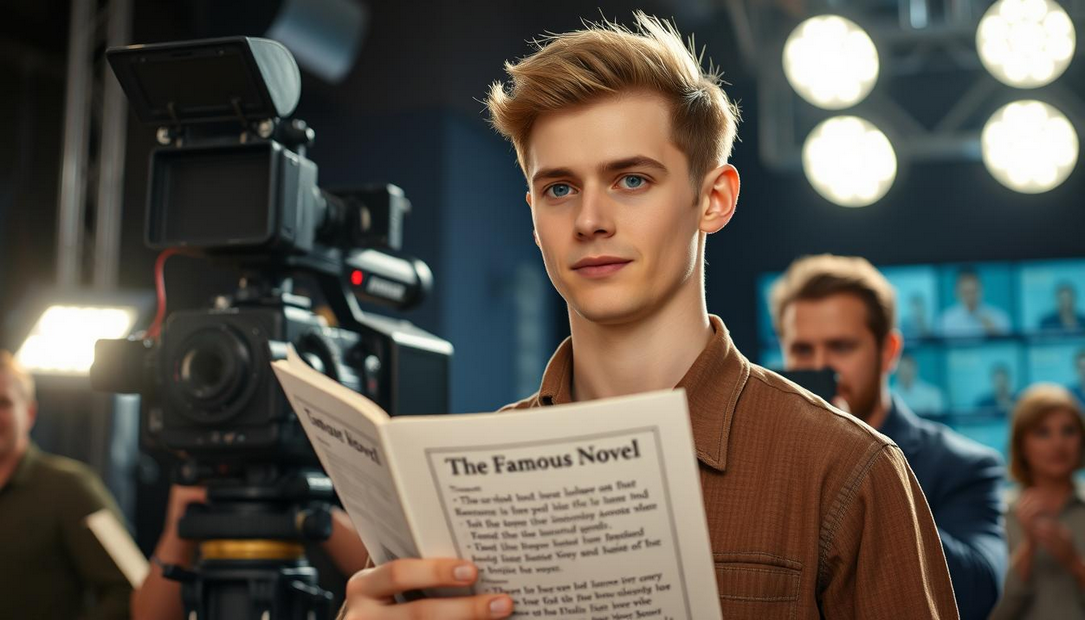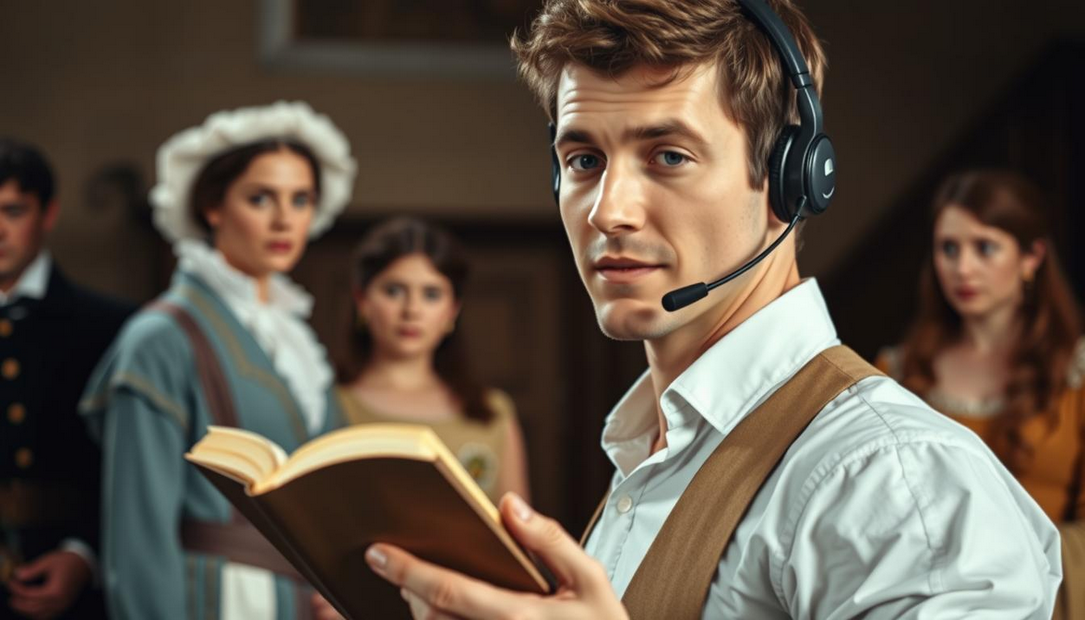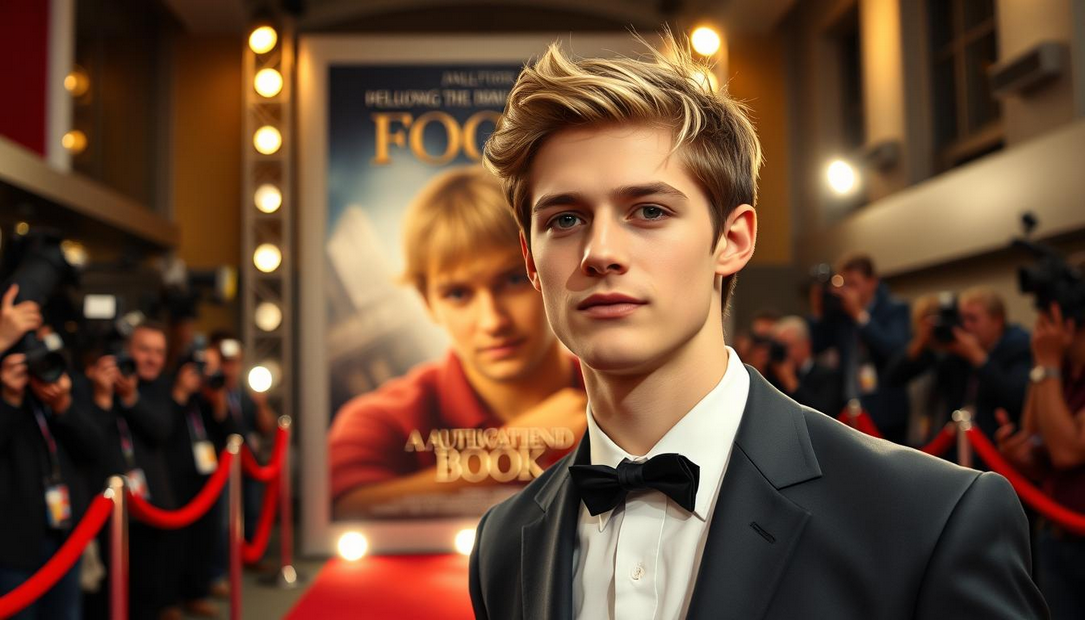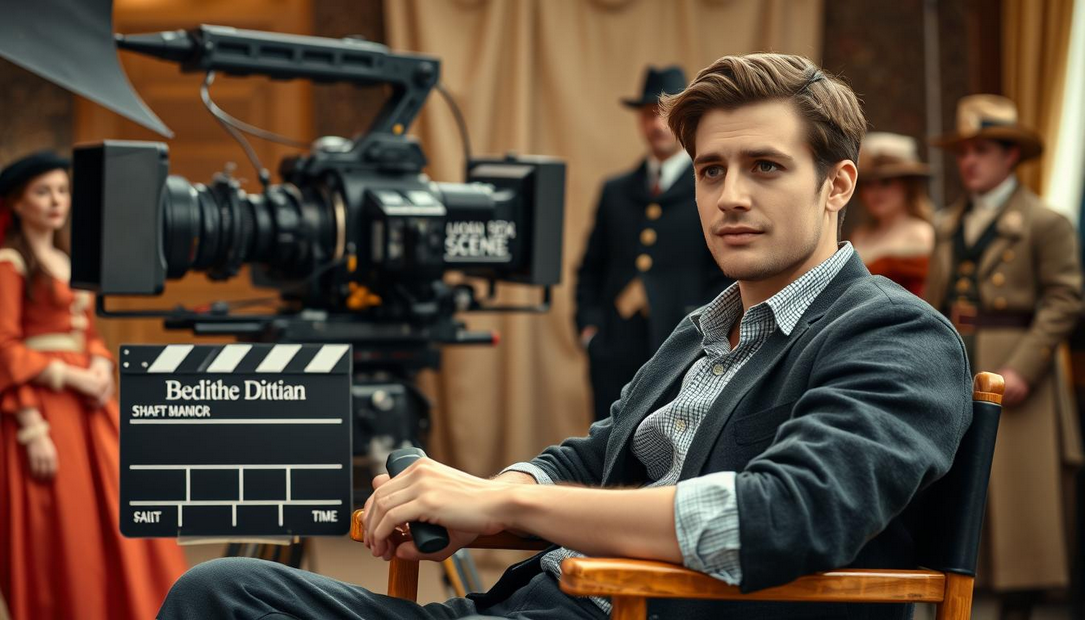India customers to view on amazon.in
From Harry Potter to Dune: The Biggest Book-to-Movie Adaptations
Books coming to life on screen has thrilled fans for years. Seeing “based on the novel by” in movie credits creates excitement. These adaptations turn our favorite stories into stunning visuals, bringing characters and worlds to life.
- The Magic Behind The Biggest Book-to-Movie Adaptations
- Why Books Make Great Source Material for Films
- The Evolution of Book Adaptations in Hollywood
- The Cultural Impact of Seeing Beloved Stories on Screen
- Magical Worlds: Fantasy and Sci-Fi Adaptations That Defined Generations
- Young Adult Phenomena: From Page-Turners to Box Office Hits
- The Harry Potter Phenomenon: Setting the Gold Standard
- Dystopian Futures: The Hunger Games, Divergent, and The Maze Runner
- Percy Jackson and the Failed Potential
- Literary Classics Reimagined for Modern Audiences
- Pride and Prejudice: The Many Faces of Elizabeth Bennet
- To Kill a Mockingbird: Capturing Harper Lee’s America
- Little Women: Four Generations of Adaptation
- Page-Turning Thrillers That Captivated Movie Audiences
- What Makes a Successful Book-to-Movie Adaptation?
- Staying True vs. Creative Liberty
- The Role of Casting and Visuals
- Author Involvement: Help or Hindrance?
- Epic Sagas: When One Book Becomes Multiple Films
- The Lord of the Rings: Extended Editions and Expanded Universes
- Dune: Herbert’s Complex Universe Finally Done Justice
- Breaking Down Final Books: Hunger Games, Harry Potter, and Twilight
- Coming Soon: Anticipated Book Adaptations on the Horizon
- Conclusion: The Enduring Bridge Between Literature and Cinema
- FAQ
- What are the most famous book-to-movie adaptations?
- Why are books such popular source material for films?
- How have fantasy and sci-fi book adaptations impacted cinema?
- What are some of the most successful young adult book-to-movie adaptations?
- How have classic literary adaptations been reimagined for modern audiences?
- What are the key factors that contribute to a successful book-to-movie adaptation?
- How have single-book adaptations expanded into multi-film franchises?
- What are some of the most anticipated upcoming book-to-movie adaptations?

Books like “Harry Potter” and “Dune” offer rich material for movies. These stories attract fans and provide a solid foundation for filmmakers. Imagine seeing Harry Potter cast spells or Paul Atreides face a sandworm for the first time. These moments unite readers and viewers in joy.
Turning a book into a movie is not always easy. Some, like “The Lord of the Rings,” are hits, while others, like “Percy Jackson,” fall short. What makes some adaptations succeed while others fail? Is it staying true to the book, choosing the right actors, or something else?
The bond between books and movies keeps growing. New tech allows filmmakers to tackle complex books. As we look at the best book-to-movie adaptations, we’ll see what makes this connection so strong.
Key Takeaways
- The biggest book-to-movie adaptations provide pre-established stories and fan bases for filmmakers
- Visual interpretations of books create shared cultural experiences for diverse audiences
- Successful movies based on books balance faithfulness with necessary adaptations for screen
- Technical advances have enabled complex books like Dune to finally receive worthy adaptations
- Book to movie adaptations span all genres from fantasy to literary classics to thrillers
- The quality of adaptations varies widely based on multiple factors including casting and directorial vision
The Magic Behind The Biggest Book-to-Movie Adaptations
Turning written stories into movies is a special magic that grabs people’s attention everywhere. It makes words come to life, creating worlds we can see and feel.

Why Books Make Great Source Material for Films
Books give filmmakers a ready-made world with complex characters and stories. The best adaptations come from stories that have already touched readers’ hearts. This makes them a safe bet for success at the box office.
Novels offer complete stories that screenwriters can adapt for the screen. The detailed descriptions in books help create real and believable worlds.
The Evolution of Book Adaptations in Hollywood
The history of turning books into movies is as long as cinema itself. Early films like “The Great Train Robbery” (1903) set the stage for storytelling in movies. Since then, the process has changed a lot:
- 1920s-1940s: Literary classics dominated adaptations
- 1950s-1970s: Epic novels received lavish treatments
- 1980s-1990s: Genre fiction gained mainstream attention
- 2000s-Present: Technical innovations enabled fantasy worlds
The Cultural Impact of Seeing Beloved Stories on Screen
When books are made into movies, they become cultural icons that bring people together. Seeing characters we’ve imagined come to life on screen is incredibly moving.
The moment a beloved character speaks their iconic lines for the first time on screen can become etched in cultural memory for generations.
These adaptations often make people want to read the original books again. This boosts book sales, introducing classic stories to new fans who discovered them through movies.
Magical Worlds: Fantasy and Sci-Fi Adaptations That Defined Generations
Fantasy and science fiction novels turned into films have given us stunning visuals. The move from page to screen lets fans see these worlds in new ways. Many top movies based on books come from this genre, drawing in viewers from all over.

Special effects have changed how we see these worlds on screen. What was once impossible is now real. Films like the chronicles of narnia – c.s. lewis brought magic and adventure to life with amazing visuals.
When Aslan first appeared in The Lion, The Witch and The Wardrobe, it was a faithful recreation. The snow-covered Narnia and the White Witch’s icy domain were brought to life with stunning detail. This detail respected the books while adding visual splendor.
These fantasy adaptations are cultural touchstones for many. Children who watched Narnia movies often read the books later. The imagery from these movies is part of our shared memory, with scenes like stepping through the wardrobe instantly recognizable.
Young Adult Phenomena: From Page-Turners to Box Office Hits
The early 2000s saw a big change. Young adult novels moved from books to movies, creating huge hits. These movies didn’t just entertain. They built huge fan bases, launched careers, and made billions.

The Harry Potter Phenomenon: Setting the Gold Standard
The harry potter series – j.k. rowling changed the game with its success. The eight movies stayed true to the books while growing with fans. Daniel Radcliffe, Emma Watson, and Rupert Grint became stars, bringing characters to life.
The franchise made over $7.7 billion, showing that books can turn into big movies.
Dystopian Futures: The Hunger Games, Divergent, and The Maze Runner
After Harry Potter, dystopian YA novels took over. The hunger games brought Jennifer Lawrence fame with its themes of entertainment and class. It showed how to bring complex ideas to the screen while keeping emotions strong.
Divergent started strong but lost steam later. The maze runner impressed with its visuals and tension. But it struggled to keep up with the books’ depth.
Percy Jackson and the Failed Potential
Not every book makes it to the big screen. Percy jackson & the olympians – rick riordan had a great premise. But the movies didn’t live up to the books. They aged up characters, simplified plots, and left out important details.
This shows that making money doesn’t mean staying true to the original story.
Literary Classics Reimagined for Modern Audiences
Timeless stories from famous authors have come to life on screen. These classic books have won over fans across generations. Each movie version shows the culture of its time while keeping the story’s essence.

Pride and Prejudice: The Many Faces of Elizabeth Bennet
Jane Austen’s romance has been adapted many times. Each version brings a new look at Elizabeth Bennet and Mr. Darcy. The 1995 BBC miniseries and the 2005 film show different sides of the story.
The 1995 version is famous for Colin Firth’s lake scene. In contrast, the 2005 film, starring Keira Knightley, focuses on youth and beauty.
To Kill a Mockingbird: Capturing Harper Lee’s America
The 1962 film of to kill a mockingbird is true to Harper Lee’s story. Gregory Peck’s Atticus Finch won an Oscar. His performance made Atticus a symbol of morality in America.
However, the movie simplifies some of the book’s complex themes. This makes the story easier to follow but loses some depth.
Little Women: Four Generations of Adaptation
Little women has been a favorite for over 80 years. From George Cukor’s 1933 version to Greta Gerwig’s 2019 film, each adaptation shows its time’s views on women. Gerwig’s version, with its focus on Jo’s writing, speaks to today’s audience while staying true to Alcott’s story.
The great gatsby has also been reimagined many times. From the 1974 version with Robert Redford to Baz Luhrmann’s 2013 film with Leonardo DiCaprio, each reflects changing views on wealth and excess.
| Classic Novel | Notable Film Adaptations | Leading Actors |
|---|---|---|
| Pride and Prejudice | 1995 (BBC), 2005 | Colin Firth/Jennifer Ehle, Keira Knightley/Matthew Macfadyen |
| To Kill a Mockingbird | 1962 | Gregory Peck |
| Little Women | 1933, 1949, 1994, 2019 | Katharine Hepburn, June Allyson, Winona Ryder, Saoirse Ronan |
| The Great Gatsby | 1974, 2013 | Robert Redford, Leonardo DiCaprio |
Page-Turning Thrillers That Captivated Movie Audiences
Literary thrillers come alive on the big screen. Sherlock Holmes has inspired many films, from Basil Rathbone’s classic to Robert Downey Jr.’s modern take. This shows how the detective can be reimagined for today’s viewers.
The Girl with the Dragon Tattoo became a hit worldwide with two adaptations. The Swedish version kept the novel’s dark feel. Meanwhile, David Fincher’s American remake brought Lisbeth Salander to life with stunning visuals.

The Da Vinci Code made a big splash when it was turned into a movie. Even with mixed reviews, it kept the book’s fast-paced adventure. Jack Reacher also made waves, with Tom Cruise playing the role. Fans debated if he was the right fit for the character.
Books tell you what characters think. Movies show you what they do. The brilliance of The Godfather adaptation is that it reveals everything through action.
No thriller adaptation is as acclaimed as The Godfather. Francis Ford Coppola’s masterpiece took Mario Puzo’s novel to new heights. It shows that the best adaptations turn books into unforgettable movies.
What Makes a Successful Book-to-Movie Adaptation?
Turning beloved books into films is a special art. The best movies based on books find a balance. They honor the book while using the power of cinema.

Staying True vs. Creative Liberty
The best adaptations walk a fine line between staying true and being creative. The Lord of the Rings trilogy kept Tolkien’s themes but cut parts hard to film. On the other hand, Blade Runner took big risks but kept the novel’s deep questions.
The Role of Casting and Visuals
Casting is key to winning over fans. When Daniel Radcliffe became Harry Potter or Jennifer Lawrence was Katniss Everdeen, these choices made the films iconic. The visuals, like design and camera work, must bring the book’s world to life for viewers.
Author Involvement: Help or Hindrance?
Author involvement is a tricky issue. J.K. Rowling’s input kept the Potter films consistent. But Stephen King’s distance from The Shining let Kubrick create his own masterpiece. Some movies got better with author help, while others thrived without it.
The secret to success lies in knowing what to keep and what to change. This balance is why some adaptations hit home, while others miss the mark, even with great books.
Epic Sagas: When One Book Becomes Multiple Films
The trend of turning books into movies has changed how studios work. They can now explore complex stories and aim for bigger box office success.
The Lord of the Rings: Extended Editions and Expanded Universes
Peter Jackson’s work on The Lord of the Rings & The Hobbit – J.R.R. Tolkien set new standards. His extended editions added almost 12 hours to the original films. Fans love these detailed adaptations.
He also turned The Hobbit into a trilogy. This explored Middle-earth’s lore beyond the book.
Dune: Herbert’s Complex Universe Finally Done Justice
Denis Villeneuve’s Dune solved a long-standing adaptation problem. By making two films from one book, he gave space to Herbert’s detailed world. This approach was a success, unlike David Lynch’s rushed 1984 version.

Breaking Down Final Books: Hunger Games, Harry Potter, and Twilight
Splitting final books is now common in movie franchises based on novels. For example, Harry Potter’s Deathly Hallows was split into two parts. This allowed for a detailed look at the wizarding war.
The Hunger Games: Mockingjay was also split. This gave room for both the political drama and action. Twilight’s Breaking Dawn was split too. It let filmmakers focus on the wedding and the intense birth sequence separately.
This shift in adaptation shows a big change in how studios work. When done right, it leads to richer movies that respect the book’s complexity.
Coming Soon: Anticipated Book Adaptations on the Horizon
Exciting new projects are coming to the world of book-to-movie adaptations. Film studios and streaming giants are racing to get rights to bestsellers and classics. They aim to make these into the next big hits.

Streaming platforms like Netflix, Amazon, and Apple TV+ are changing the game. They’re bringing literary works to life with more freedom. This means stories that might not fit in theaters can now shine on screen.
Several major literary properties are currently in production:
- Mickey7, a sci-fi novel by Edward Ashton, with Robert Pattinson in the lead role
- Colleen Hoover’s romance phenomenon It Ends With Us starring Blake Lively
- The long-awaited adaptation of Cormac McCarthy’s Blood Meridian
- Hanya Yanagihara’s heartbreaking A Little Life as a limited series
- The fantastical Fourth Wing by Rebecca Yarros
Hollywood movies based on books are now showcasing more diverse voices. Studios are looking for stories from LGBTQ+ authors, writers of color, and international talents. This brings fresh perspectives to the big and small screens.
The next wave of adaptations shows a shift in what audiences want. Fantasy series, romance novels, and literary fiction are all getting attention. This means book lovers of all genres have something exciting to look forward to as their favorite stories come to life on screen.
Conclusion: The Enduring Bridge Between Literature and Cinema
The dance between words and movies is still captivating, with famous book adaptations drawing fans everywhere. These adaptations bring beloved novels to life on the big screen. They have a big impact on culture, making stories we love even more special.
Some might say sticking to the original is best. But turning stories into movies can introduce classics to new fans. This mix of literature and film has become a key part of how we share stories.
Whether you love reading or watching movies, stories touch us all. Exploring how books and films work together helps us appreciate great storytelling. So, dive into a book or watch a movie that’s based on one. It’s a way to connect the world of words and pictures.
FAQ
What are the most famous book-to-movie adaptations?
Famous book-to-movie adaptations include the Harry Potter series and The Lord of the Rings. The Chronicles of Narnia, The Hunger Games, and Divergent are also well-known. These stories have won the hearts of millions worldwide.
Why are books such popular source material for films?
Books are great for movies because they have already developed characters and stories. This makes them easy to turn into films. It also lets filmmakers add their own twist, making the story even better for the screen.
How have fantasy and sci-fi book adaptations impacted cinema?
Fantasy and sci-fi book adaptations have changed movies a lot. They’ve used new tech to bring imaginary worlds to life. Classics like The Chronicles of Narnia and Harry Potter have become cultural icons, introducing new fans to these stories.
What are some of the most successful young adult book-to-movie adaptations?
The Harry Potter series and The Hunger Games are huge hits. Divergent and The Maze Runner have also done well. These movies have grown in popularity, exploring themes of identity and power.
How have classic literary adaptations been reimagined for modern audiences?
Classics like Pride and Prejudice and Little Women have been remade many times. Each version shows the style and concerns of its time. These updates keep the stories alive, offering new views on old favorites.
What are the key factors that contribute to a successful book-to-movie adaptation?
Good adaptations balance staying true to the book and taking creative risks. The right actors are key, as is using visuals to bring the story to life. The author’s input can help or hinder the project.
How have single-book adaptations expanded into multi-film franchises?
Epic stories like The Lord of the Rings and Dune have grown into big franchises. This lets fans dive deeper into the world and characters. But, it also risks making the story too long or diluted.
What are some of the most anticipated upcoming book-to-movie adaptations?
Fans are excited for The School for Good and Evil, The Last Thing He Told Me, and Lessons in Chemistry. These projects show that books are still a great source for movies, with a mix of genres and voices.







